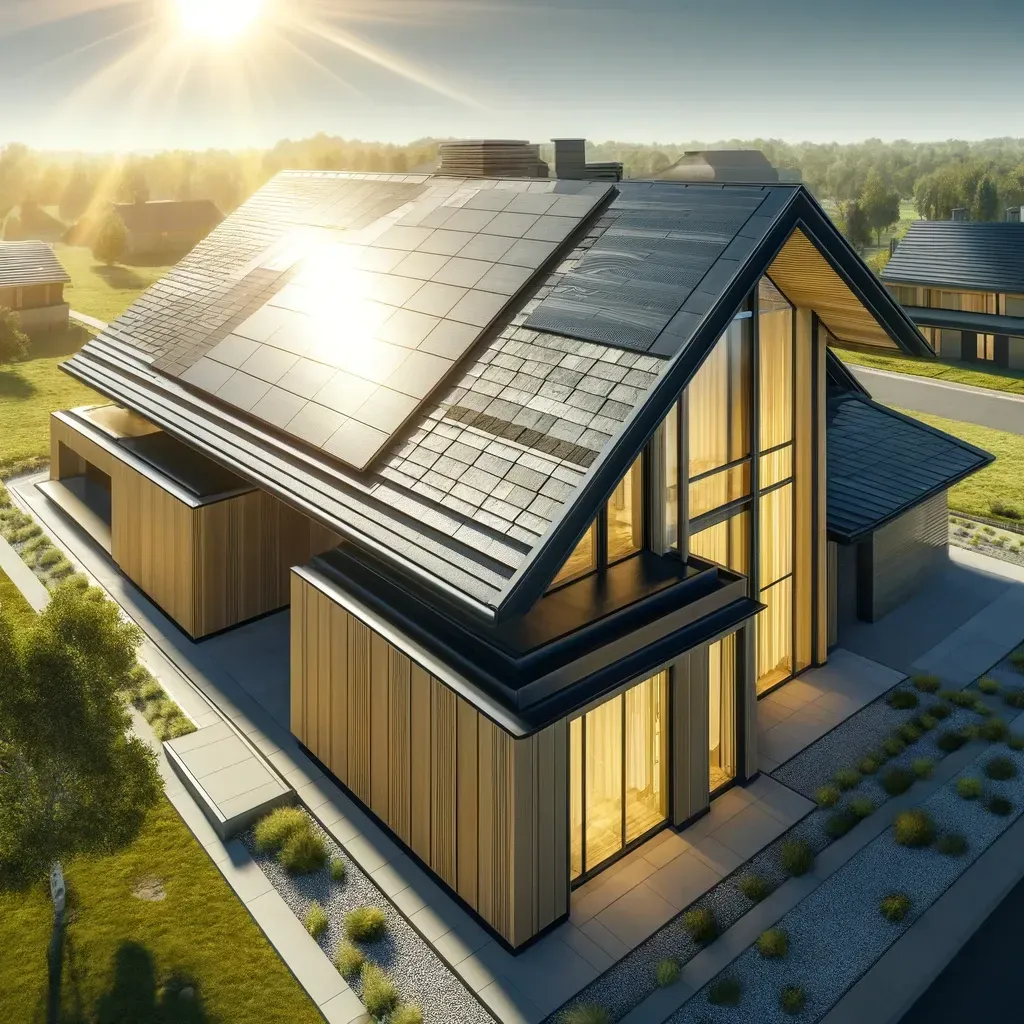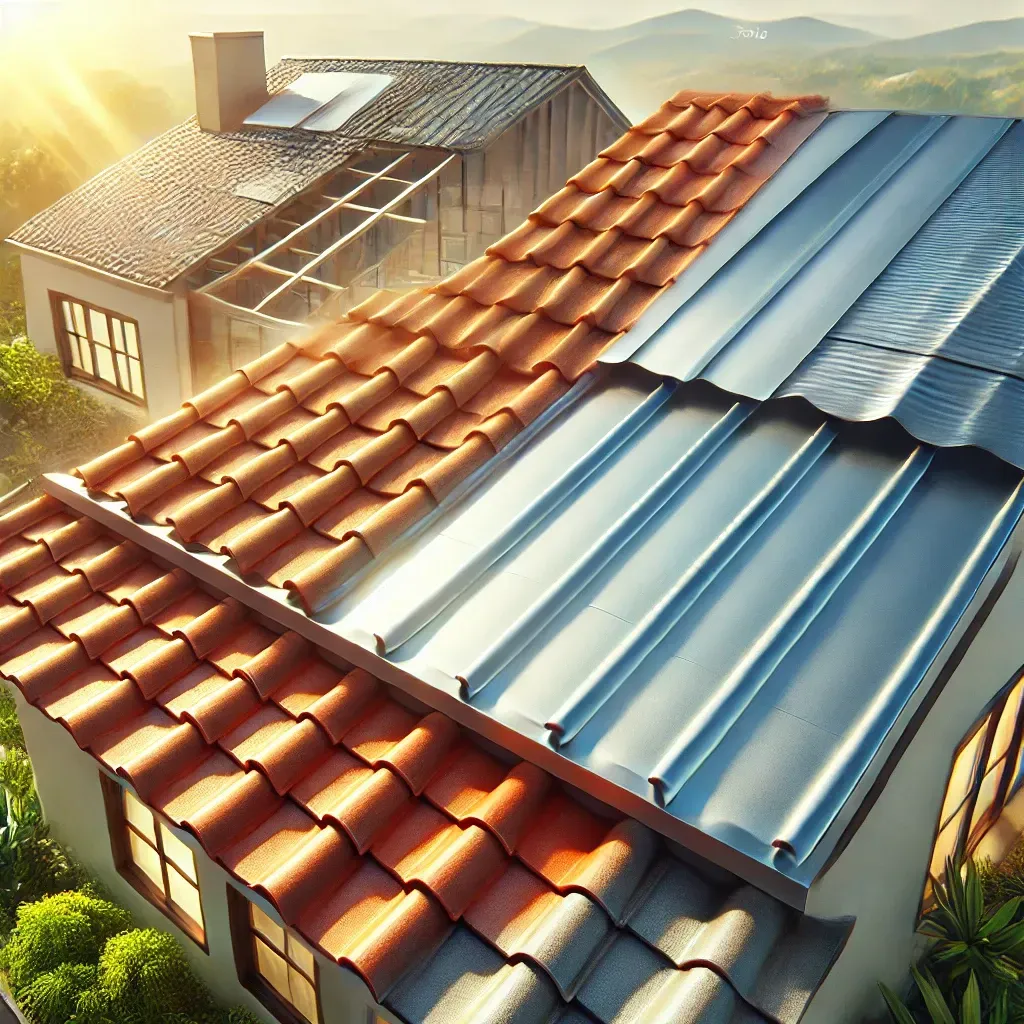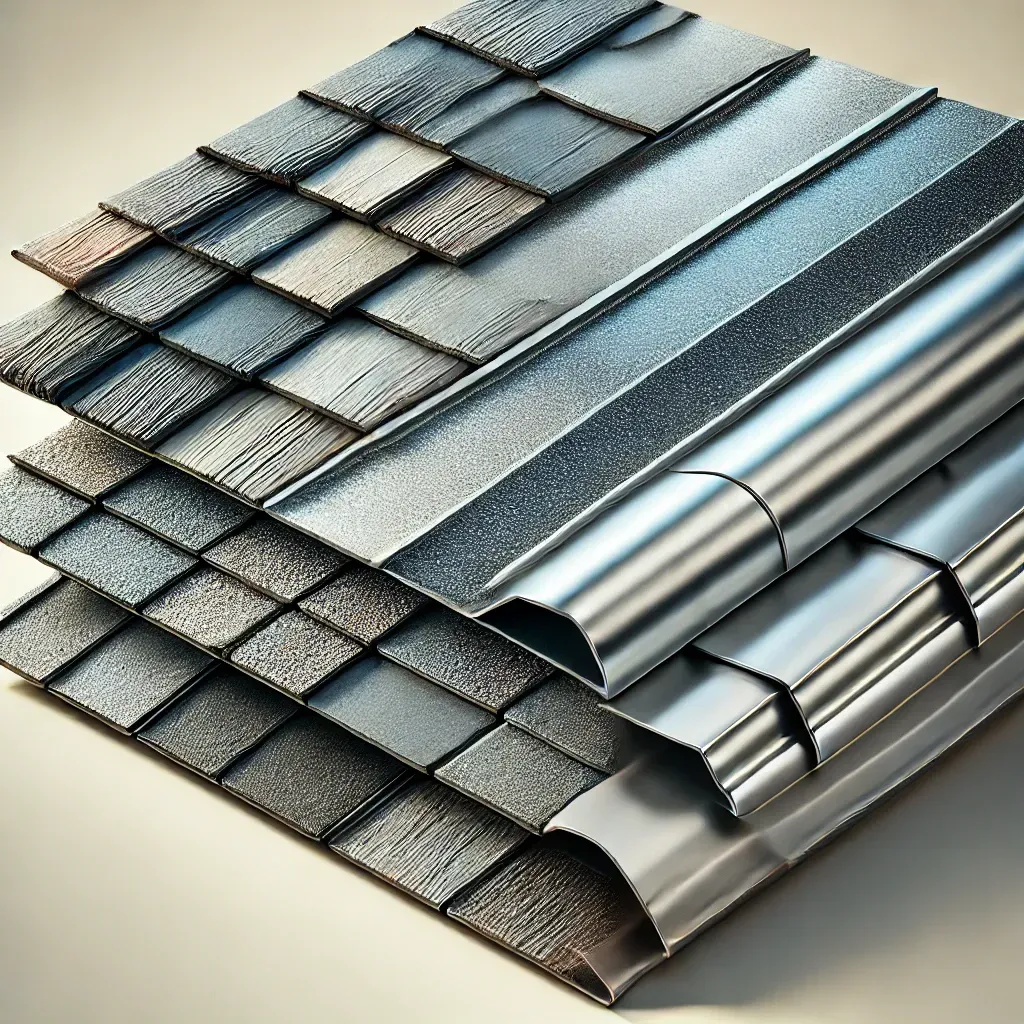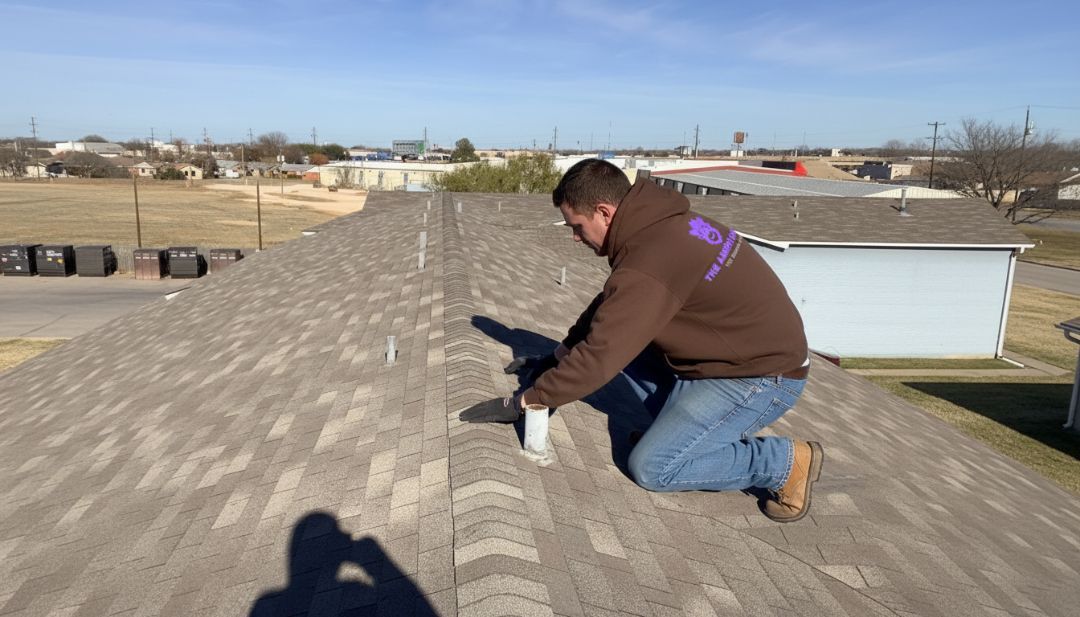What Is the Best Heat-Resistant Shingle for Hot Climates?
TLDR;
The best heat-resistant shingles for hot climates are metal shingles, solar-reflective asphalt shingles, and clay or concrete tiles. These materials reflect solar radiation, resist UV damage, and help reduce energy costs in extreme heat zones.
Energy-Efficient Roofing Materials That Beat the Heat

Choosing the right roofing material in hot climates is more than a matter of style — it’s about protecting your home from relentless sun exposure, reducing cooling bills, and extending roof life. At Amish Roofer, we understand what high temperatures do to shingles. Let’s break down your best options — with no fluff, just what works.
Why Heat Resistance in Roofing Matters
Hot climates strain your roof every day. Your shingles are constantly hit with:
- Infrared radiation that heats the surface
- Ultraviolet (UV) rays that degrade materials
- Thermal cycling that cracks and warps weak materials
Here’s why choosing heat-reflective and energy-efficient materials is essential:
- Solar Reflectance Index (SRI) tells how much sunlight is reflected
- Thermal Emissivity shows how quickly heat is released
- Shingles with high SRI and emissivity stay cooler and
cut down solar heat gain
Lower roof temperatures = lower attic temperatures =
reduced AC usage and extended shingle life.
Best Roofing Shingles for Hot Weather: Top Contenders
Metal Shingles: The Champion of Heat-Reflective Shingles
Why they work:
- Naturally reflective, especially in light colors
- High
SRI and
cool roof coatings available
- Durable in intense sun and sudden storms
- Long lifespan:
40–70 years
Best for: Desert climates, wildfire-prone areas, modern aesthetics
Clay and Concrete Tiles: Thermal Mass at Its Finest
Why they work:
- Absorb heat
slowly, releasing it over time
- Thick material insulates against outdoor temps
- Resistant to UV degradation and heat stress
- Lifespan:
50–100 years
Best for: Southwestern architecture, Spanish/Mediterranean-style homes
Slate Shingles: Natural Stone with Heat Resistance
Are slate shingles heat resistant? Yes.
Slate excels in hot, dry climates because it:
- Reflects rather than absorbs heat
- Lasts
up to 100 years
- Provides
fire resistance for wildfire zones
Considerations:
- Heavy (may need structural reinforcement)
- Premium pricing
Best for: Luxury homes in dry, sun-soaked regions
Rubber and Synthetic Shingles: Modern, Efficient, Lightweight
Why they work:
- Engineered to resist
UV and thermal expansion
- Some versions mimic slate or shake looks
- Made with
eco-friendly and
impact-resistant materials
- Lifespan:
30–50 years
Best for: All hot climates, especially where lightweight roofing is ideal
Solar Reflective Asphalt Shingles: Familiar Look, Cool Performance
Why they work:
- Traditional look with high-tech granules
- Rated by
ENERGY STAR for
cool roof technology
- Available in various colors (light colors = higher reflectivity)
- Lifespan:
20–30 years
Best for: Homeowners who want affordability and heat resistance
Heat-Resistance Comparison Table
| Shingle Type | SRI Rating | Lifespan | Avg Cost | Reflectivity | Best Use Case |
|---|---|---|---|---|---|
| Metal | High | 40–70 years | $$$ | Excellent | Dry, hot climates |
| Clay/Concrete Tile | Moderate | 50–100 years | $$$ | Good | Southwest US |
| Slate | Moderate | 75–100 years | $$$$ | Good | Dry luxury builds |
| Synthetic/Rubber | High | 30–50 years | $$ | Excellent | Versatile hot environments |
| Solar Reflective Asphalt | High | 20–30 years | $ | Very Good | Traditional homes |
Are Cedar Shingles Heat Resistant?

Not really — and here’s why.
- Cedar absorbs heat, increasing indoor temperatures
- Without treatment, they’re
highly flammable
- Hot climates can dry and crack cedar over time
If you love the look of cedar:
- Use
fire-retardant treated cedar
- Install over solid insulation layers
- Understand they still won’t match
asphalt or metal in heat performance
Are Shake Shingles Heat Resistant?

Wooden shake shingles — like cedar or redwood — are not ideal in hot climates.
- Absorb solar heat, making interiors warmer
- Susceptible to cracking and shrinking under extreme temperatures
- Prone to fire unless treated
Alternative: Go with
synthetic shakes designed to
mimic wood while offering better UV and heat performance.
Cedar Shingles for Warm Climates: Yes or No?

They can work with proper treatment and ventilation, but they:
- Require
high maintenance
- Don’t reflect sunlight well
- Struggle with high
solar heat gain
In humid, warm climates, they
age fast and can rot. Consider them only with upgraded underlayments and insulation.
Roofing Materials for Hot Climates: What Really Works?
When selecting roofing in hot zones, key factors to evaluate:
- Reflectivity (SRI of 30+ is ideal)
- Thermal Mass vs. Solar Reflection
- Color — lighter is better
- Roof Pitch and Orientation
- Climate Adaptation — humid vs dry
- Fire Rating — Class A recommended
- Code & HOA Compliance
Best Shingles for Desert Heat vs Humid Heat
Desert Climates (e.g., Arizona, Nevada, West Texas)
Top Picks:
- Metal (coated)
- Clay Tile
- Solar Reflective Asphalt
These handle dry air, sudden temperature swings, and direct UV exposure.
Humid Heat (e.g., Florida, Georgia, Gulf Coast)
Top Picks:
- Synthetic Rubber Shingles
- Solar Reflective Asphalt
- Treated Cedar (only with caution)
These resist
mildew,
moisture expansion, and
rot, while keeping roofs cool.
How Cool Roof Shingles Save Energy
Cool roofs reduce roof surface temps by up to 50°F, cutting AC usage by:
- 10–30% during peak summer
- Lowering attic temperatures
- Reducing
solar heat gain
Bonus: Qualify for
ENERGY STAR tax credits and local rebates in many states.
Roofing Solutions for Hot Climates That Pay Off
Installation Cost vs. Energy Savings:
| Roofing Type | Upfront Cost | Energy Savings | ROI Timeline |
|---|---|---|---|
| Metal | High | High | 5–8 years |
| Asphalt (Reflective) | Low | Moderate | 3–5 years |
| Synthetic Rubber | Medium | High | 4–6 years |
| Clay Tile | High | Moderate | 8–10 years |
Don’t forget: Proper roof ventilation (ridge vents, attic fans) amplifies the benefits of any heat-resistant roof. Also, keep in mind that installing new shingles over old ones is bad idea—it can trap heat and undermine the performance of even the most reflective materials.
Common Questions About Heat-Resistant Shingles
Are metal roofs better for hot climates?
Yes. Metal roofs reflect sunlight better than most materials, last decades, and resist fire and wind — perfect for heat.
Do shingles really impact indoor temperatures?
Absolutely. Roof color, material, and reflectivity influence attic and home temps significantly.
What is the most affordable heat-resistant roofing material?
Solar reflective asphalt shingles are the most cost-effective option for homeowners who want performance and savings.
Can I install heat-resistant shingles over existing ones?
It's not recommended. Layering traps heat and can lead to damage. Always remove old shingles for optimal performance.





